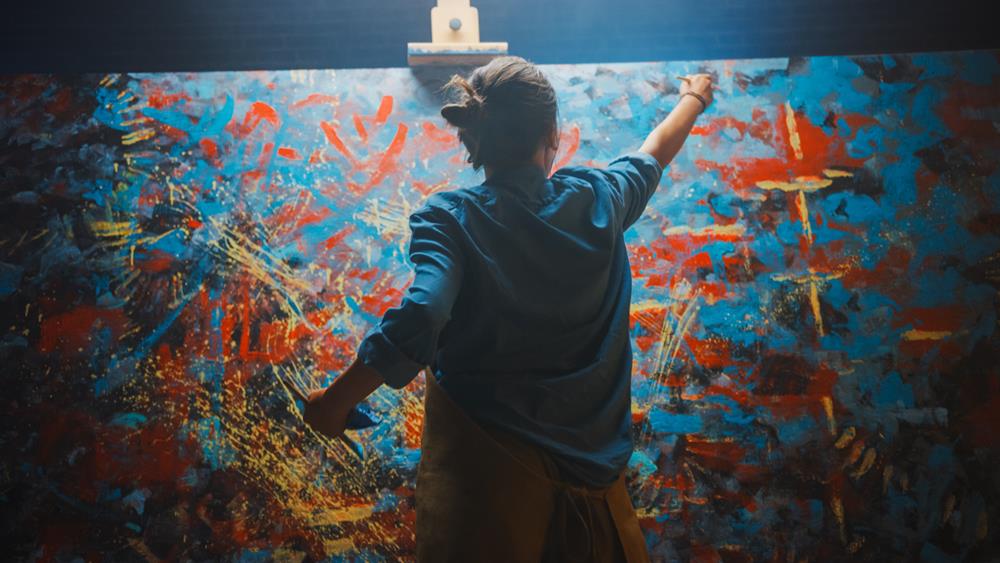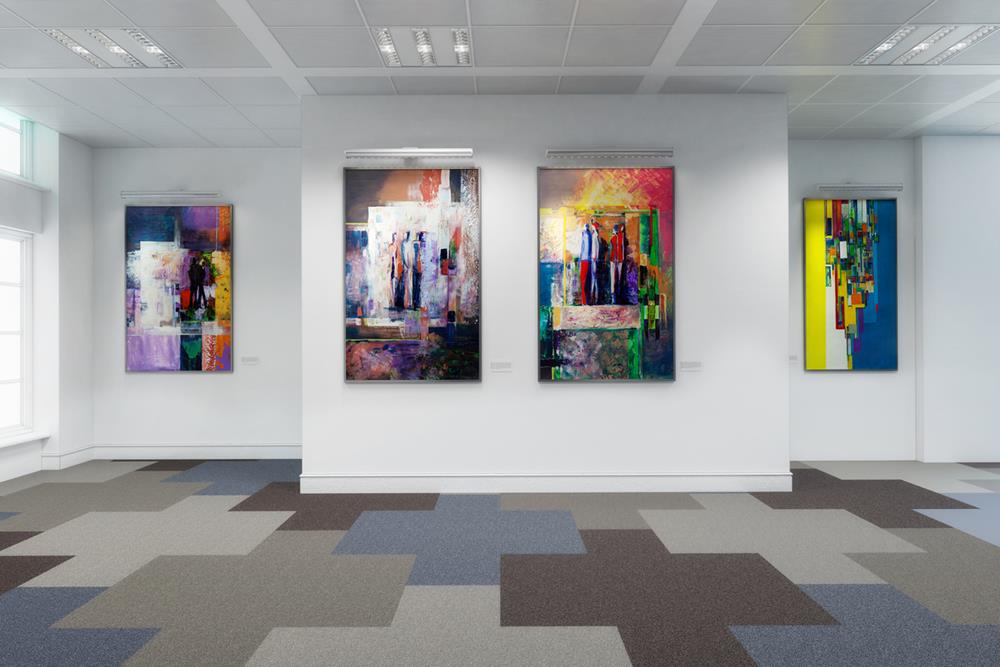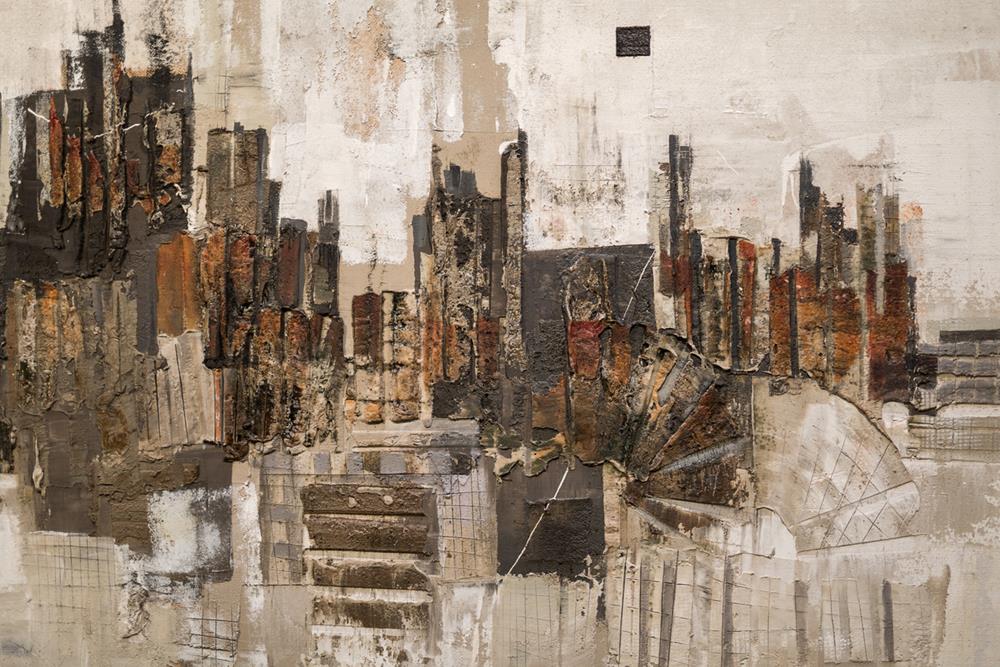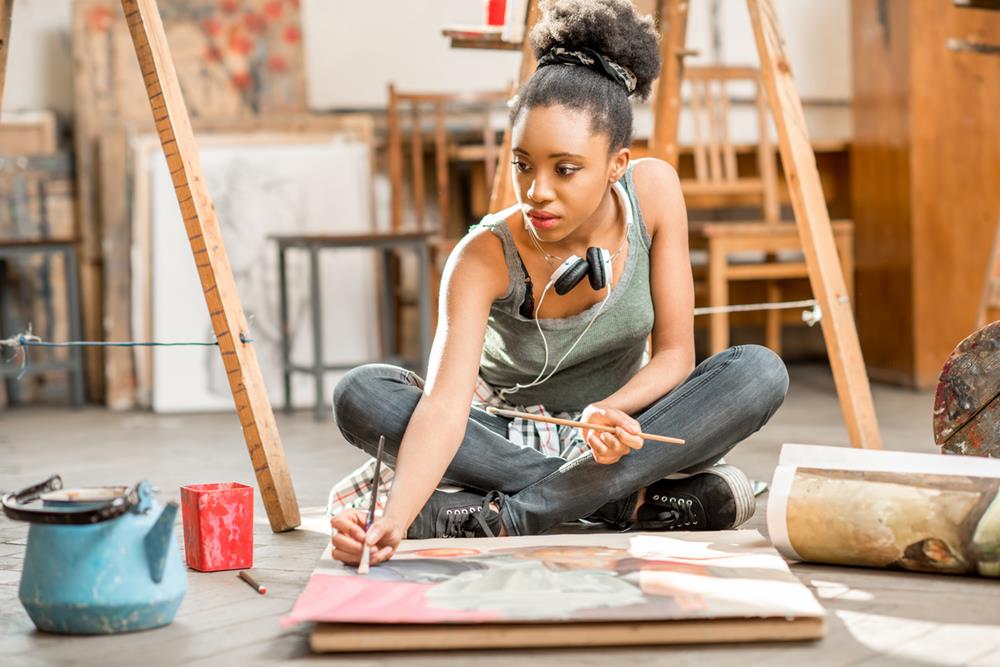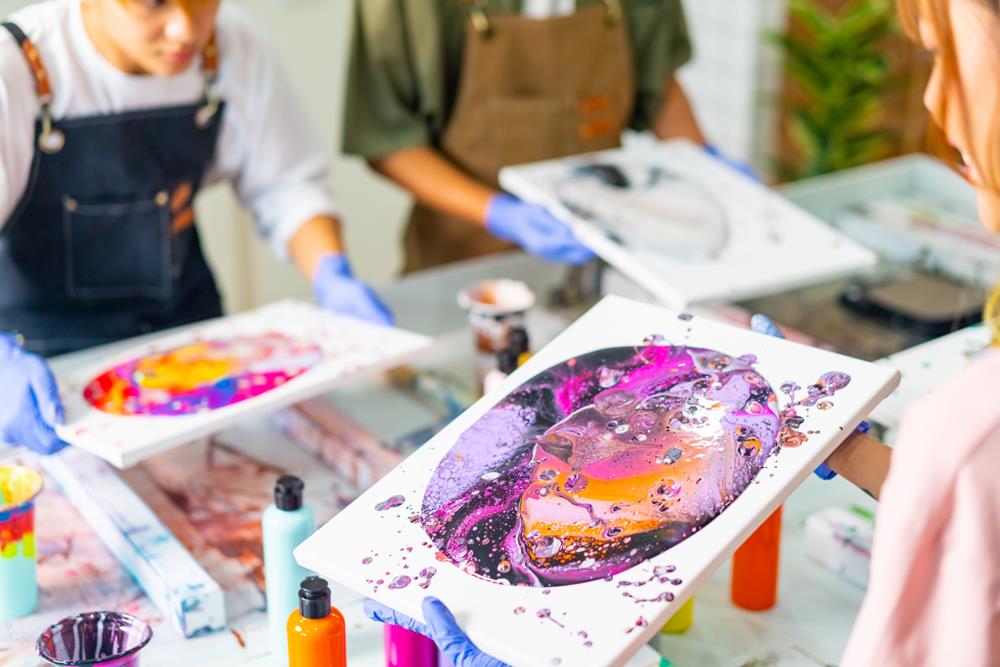Abstract art is a unique kind of art that doesn’t try to show things exactly as they are. Instead, it uses shapes, colors, and forms to express feelings or ideas. If you’re curious about abstract art or looking to add some to your collection, you might wonder where to find it.
This article will help guide you through various places where you can discover abstract art. From traditional art galleries to the digital world, there are many spots to explore. Whether you’re new to abstract art or a long-time fan, this guide aims to help you find new and exciting pieces to admire or purchase. Let’s dive into the world of abstract art and see where we can find these captivating works.
Understanding Abstract Art
Abstract art is a fascinating field within the art world that steps away from depicting realistic forms. Instead, it focuses on expressing emotions, ideas, or experiences through unconventional means.
What is Abstract Art?
At its core, abstract art is about breaking away from the traditional representation of physical objects. It emphasizes shapes, colors, patterns, and textures to convey a message or evoke a feeling. This type of art invites viewers to interpret it in their own ways, often leading to a deeply personal experience with the artwork.
The History and Evolution
Abstract art has a rich history, dating back to the early 20th century. Artists began experimenting with abstraction as a response to the rapid changes in technology, science, and philosophy of their times. Movements such as Cubism, Abstract Expressionism, and Surrealism played significant roles in its development. These movements pushed the boundaries of art, challenging viewers to see beyond the literal to the underlying essence of the subject.
Key Artists and Movements
Several artists stand out when discussing abstract art. Wassily Kandinsky, often considered the pioneer of abstract art, used color and form to evoke sound and emotion. Jackson Pollock’s drip paintings, a part of the Abstract Expressionism movement, introduced a dynamic, process-focused art form. Meanwhile, artists like Mark Rothko focused on color field painting, creating large-scale works with blocks of color to provoke an emotional response.
Traditional Venues for Discovering Abstract Art
While the digital age has transformed how we encounter and purchase art, traditional venues remain vital for discovering abstract art. These spaces not only provide a tangible experience with the artwork but also offer a sense of community and shared appreciation. Here’s where you can start your journey into the world of abstract art in a traditional setting.
Art Galleries
Art galleries play a crucial role in the art ecosystem, showcasing works from emerging and established artists. Galleries specializing in abstract art provide a curated experience, allowing you to immerse yourself in the depth and diversity of this art form. Visiting these galleries can offer insight into the latest trends and movements within the abstract world. Additionally, gallery staff can be invaluable resources, offering insights into the artists’ intentions and the significance of their works.
Museums
Museums are treasure troves of art, housing collections that span across different eras and styles. Many museums have sections dedicated to modern and contemporary art, where abstract art is prominently featured. Exhibits in museums often provide detailed backgrounds about the movements and contexts in which the abstract works were created, enriching your understanding and appreciation of the art. Special exhibitions may also focus on specific abstract artists or themes, offering a deeper dive into this expressive world.
One example is the Guggenheim Museum. It was established by the forward-thinking art patron who propelled Jackson Pollock and his groundbreaking work “Mural” into the spotlight and was originally called the Museum of Non-Objective Painting when it opened its doors in 1939. This museum emerged as a major sanctuary for works of abstract art, a fact that its initial name clearly indicates.
Art Fairs and Exhibitions
Art fairs and exhibitions are exciting events where galleries, artists, and collectors converge. These venues are particularly useful for discovering a wide range of abstract art in one place. Art fairs often feature the latest works by contemporary abstract artists, giving you a glimpse into the evolving landscape of abstract art. They also provide a unique opportunity to meet artists and gallery owners, allowing for direct conversation and connection with the people behind the art.
Local Art Scenes
Exploring the local art scene in your city or town can uncover hidden gems of abstract art. Local galleries, community art centers, and university art departments often host exhibitions that showcase the work of local abstract artists. Participating in local art walks or studio tours can provide a more intimate experience with the art and artists, fostering a sense of community and support for local talent.
Modern Platforms for Finding Abstract Art
In the digital era, the avenues for discovering and acquiring abstract art have expanded far beyond traditional spaces. Online platforms and social media have opened up new worlds of possibilities for both artists and art lovers. Here’s how you can tap into these modern resources to find abstract art.
Online Art Platforms
The internet has become a vast marketplace for art, with websites and online galleries making it easier than ever to discover and purchase abstract art from around the globe. These platforms often feature a wide range of artists, from emerging talents to established names, providing something for every taste and budget. Sites like Artsy, Saatchi Art, and Artfinder offer curated selections and user-friendly search tools to help you find the perfect piece. Additionally, many of these platforms provide artist profiles, interviews, and articles that give deeper insights into the abstract works and their creators.
Social Media and Artist Collectives
Social media platforms like Instagram, Pinterest, and Facebook have become important tools for artists to showcase their work and for art lovers to find new talent. Following hashtags such as #AbstractArt or #ContemporaryArt can lead you to a plethora of artists and galleries from around the world. Artist collectives and online communities also use these platforms to share their members’ works, host virtual exhibitions, and connect directly with their audience. Engaging with artists through social media not only allows you to discover new art but also to follow the artists’ journeys and processes.
Virtual Galleries and Exhibitions
The rise of virtual reality (VR) technology and online exhibitions has transformed the way we can view and interact with art. Virtual galleries offer immersive experiences, allowing you to explore collections and exhibitions in a simulated 3D space from the comfort of your home. These digital venues are particularly useful for international exhibitions, making it possible to visit shows across the globe without travel. Many traditional museums and galleries also host virtual tours and online exhibitions, broadening their reach and accessibility.
Digital Art Platforms
As the art world embraces digitalization, platforms dedicated to digital and NFT (Non-Fungible Token) art have emerged as exciting new venues for discovering abstract art. Websites like Foundation, OpenSea, and SuperRare specialize in digital art, offering a platform for artists to sell their work as digital tokens. This realm of abstract art is vibrant and rapidly evolving, appealing to a younger, tech-savvy generation of art collectors.
Supporting Local and Emerging Artists
Discovering and supporting local and emerging artists is a fulfilling way to engage with the abstract art community. These artists bring fresh perspectives and innovative techniques to the scene, often reflecting the cultural and social dynamics of their environments. Here’s how you can support and connect with local and emerging abstract artists.
Exploring Local Art Scenes
Every city and town has its unique art scene, bustling with galleries, studios, and community art centers. These spaces are vital for local artists to showcase their work. Participating in art walks, local gallery nights, and studio tours can introduce you to the vibrant community of artists in your area. These events offer a more personal connection to the art, as you often have the chance to meet the artists and hear about their processes and inspirations directly. Supporting local art scenes not only enriches your cultural experience but also contributes to the vitality and sustainability of the arts within your community.
Attending Graduate Shows and University Exhibitions
Art schools and universities are hotbeds of creativity, where emerging artists are honing their skills and developing their artistic voices. Graduate shows and university exhibitions provide a glimpse into the future of abstract art, showcasing the innovative work of art students. These events are open to the public and offer an opportunity to purchase artwork from up-and-coming talents at the start of their careers. By attending these shows, you not only gain access to original and cutting-edge art but also help support artists in the critical early stages of their careers.
Connecting with Artist Collectives
Artist collectives and cooperatives play a crucial role in the art ecosystem by providing support networks for artists to collaborate, exhibit, and sell their work. These collectives often organize exhibitions, pop-up shows, and art fairs, creating platforms for members to gain exposure. Engaging with these collectives can lead you to discover a diverse array of abstract artists and artworks. Purchasing art from collectives not only enriches your collection but also supports the collective’s ability to foster a supportive environment for artists.
Utilizing Social Media and Online Marketplaces
Social media platforms and online marketplaces are invaluable tools for discovering and supporting local and emerging artists. Following local art hashtags, artist-run spaces, and art collectives on platforms like Instagram can uncover a wealth of talent in your area. Online marketplaces such as Etsy and local online art fairs also provide avenues to purchase directly from artists, ensuring that your support has a direct impact on their livelihood.
Supporting local and emerging abstract artists is a rewarding experience that fosters a sense of community and connection. It allows you to be part of the artists’ growth and contributes to the vibrancy of the local art scene.
Tips for Collecting Abstract Art
Collecting abstract art can be a deeply rewarding experience, offering not only aesthetic enjoyment but also the potential for investment. Whether you’re a seasoned collector or new to the art world, here are some tips to guide you in building a meaningful and cohesive collection of abstract art.
Start with Research:
- Familiarize yourself with the history and movements of abstract art to understand the context behind different styles and artists.
- Visit galleries, museums, and exhibitions to see a wide range of abstract art in person.
- Read art publications and follow art blogs to stay informed about trends and emerging artists.
Define Your Taste:
- Spend time exploring different styles of abstract art to discover what resonates with you. This can range from color field painting to geometric abstraction, expressionist works, and beyond.
- Consider what emotions or thoughts you want the art to evoke in your space.
Set a Budget:
- Establish a budget for your art purchases. Remember, you don’t have to start with expensive pieces; emerging artists’ works can be both accessible and valuable.
- Consider the long-term value of the artworks you acquire.
Buy What You Love:
- The most important aspect of collecting art is personal connection. Buy art that moves you or speaks to you on a personal level, regardless of the artist’s current market status.
- Your collection should reflect your personal journey and taste.
Research the Artists:
- When you find an artist whose work you admire, learn more about them. Understanding an artist’s background, process, and inspiration can add depth to your collection.
- Direct engagement with artists at shows or via social media can also provide insight and foster a personal connection to the art.
Consider the Space:
- Think about where you’ll display the art in your home or office. The size, color, and lighting of the space can influence the impact of the artwork.
- Remember that abstract art can be a focal point in a room, so consider how each piece will integrate with your existing décor.
Authenticity and Documentation:
- Ensure that the artwork comes with proper documentation, such as a certificate of authenticity. This is crucial for both the value of the art and for insurance purposes.
- Documentation should include the artist’s name, the title of the work, the medium, and the year it was created.
Care and Maintenance:
- Learn about how to properly care for and maintain your artworks to preserve their condition and value.
- This includes understanding the impact of lighting and humidity and how to safely display and store the pieces.
Collecting abstract art is a journey that evolves with your personal taste and understanding of the art form. By following these tips, you can build a collection that not only enhances your environment but also holds personal significance and potential financial value.
Conclusion
Finding and collecting abstract art is an adventure filled with discovery and personal growth. Whether you’re exploring traditional venues like galleries and museums, diving into the digital world through online platforms, or connecting with local and emerging artists, there’s a vast world of abstract art waiting for you.
Remember, the most important part of this journey is to enjoy the art that speaks to you, evokes emotions, and enriches your space. Keep an open mind, follow your instincts, and let your collection reflect your unique perspective and experiences. Happy art hunting!


